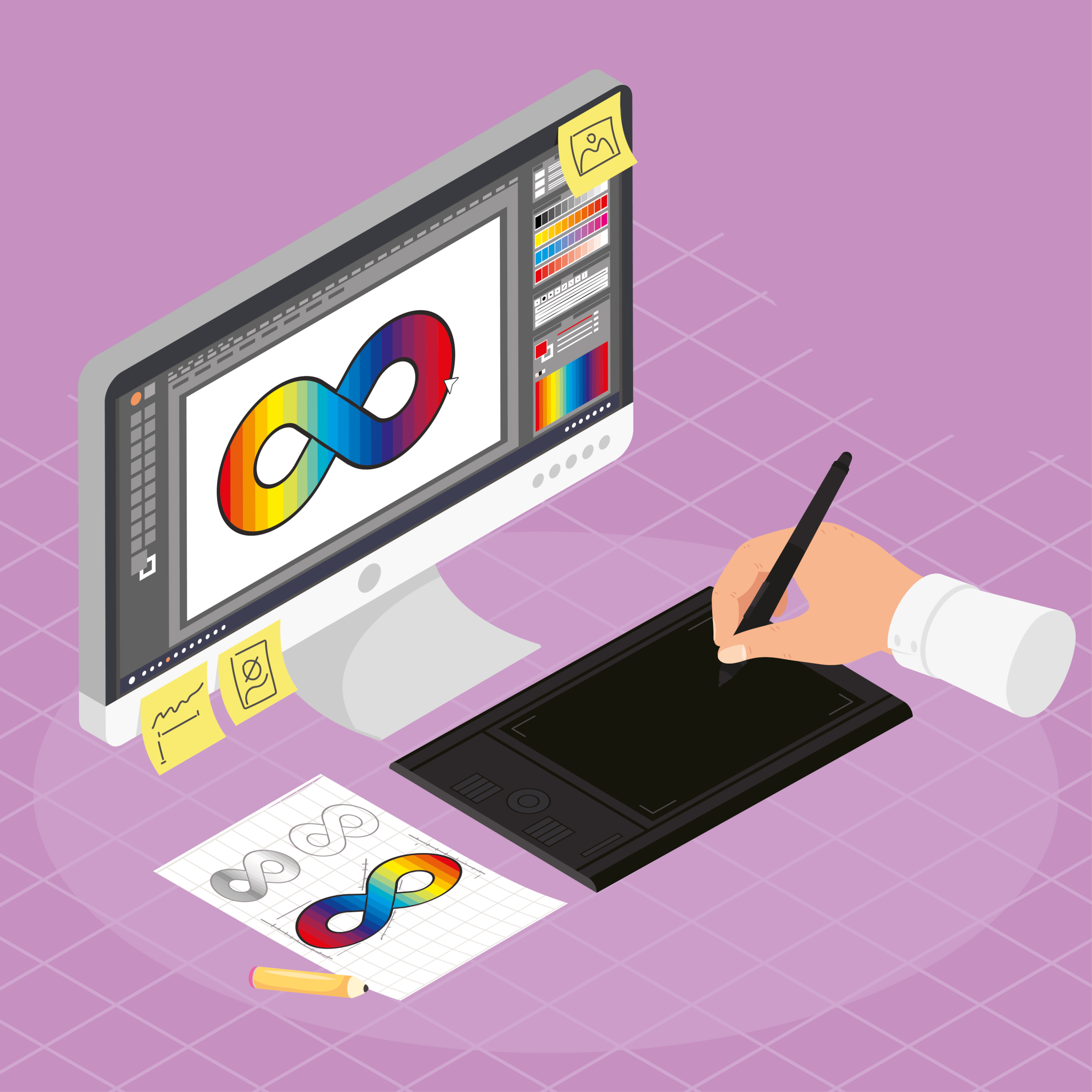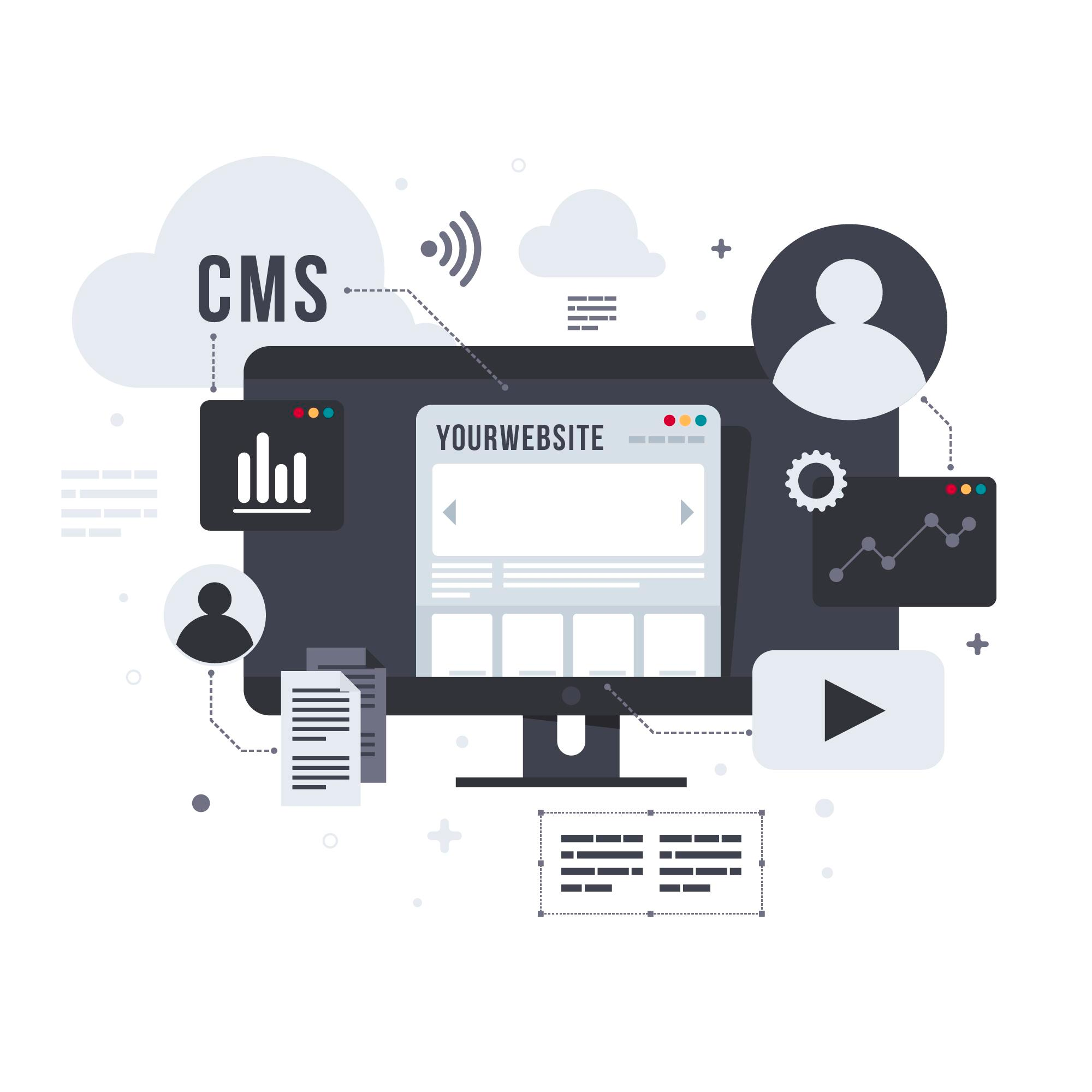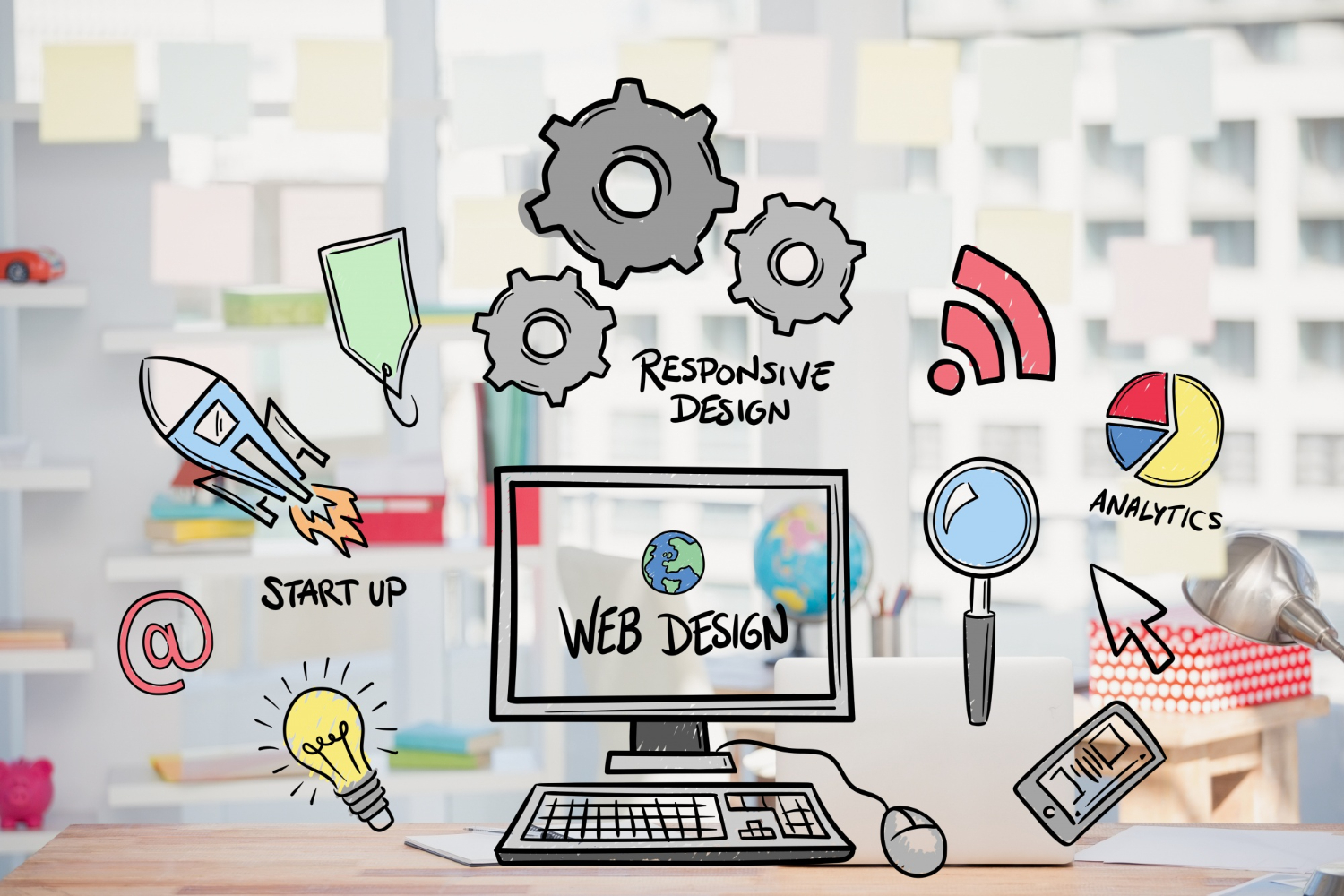
The Best Web Design Tools and Software: Crafting Digital Masterpieces
Wielding the right web development tools is akin to possessing a sculptor’s chisel—each stroke shaping a digital masterpiece. Web design tools and software are the artisans’ arsenal, enabling them to transform ideas into visually compelling and functional websites.
Web design tools encompass a vast spectrum of applications and platforms tailored to facilitate the creation, development, and optimisation of websites. From graphic design to coding, prototyping, and performance optimisation, these tools empower web designers to translate creativity into seamless digital experiences.
The choice of tools significantly influences the efficiency and quality of web design projects. Selecting the appropriate tools streamlines workflows enhances collaboration, and ensures the creation of websites that not only captivate visually but also function seamlessly across devices.
When navigating the sea of web design tools, certain features emerge as critical. Key considerations include versatility, user-friendliness, collaborative capabilities, and adaptability to industry trends. A holistic web design system or tool set should seamlessly integrate graphic design, development, prototyping, and optimisation functions, fostering a cohesive and efficient design process.
In this blog, we delve into web design tools, exploring their significance, key features, and the diverse array available for beginner web designers and developers.
Graphic Design Tools
Graphic design tools are software and hardware aids designers use to create visual content. Popular design software now includes Adobe Creative Suite and Canva; graphics tablets are common hardware tools. Together, these tools enable the manipulation of images, illustration creation, and layout design for diverse visual communication purposes.
Adobe Creative Cloud Suite

The juggernaut of graphic design, Adobe Creative Cloud, offers a trifecta of web design tools indispensable for designers:
- Photoshop for image manipulation
- Illustrator for vector graphics
- XD for experience design.
These web design tools provide web designers with a robust foundation for creating visually stunning and interactive responsive web designs.
Sketch
Popular among UI/UX designers, Sketch is a vector-based web design tool known for its simplicity and focus on collaboration. Its artboard-based approach and extensive plugin ecosystem make it a staple for creating elegant user interfaces.
Figma
Figma‘s cloud-based platform revolutionises collaborative design. With real-time editing, prototyping, and handoff features, Figma ensures seamless teamwork, allowing multiple designers and stakeholders to work together irrespective of geographical constraints.
Canva
Catering to both beginners and professionals, Canva simplifies graphic design with its user-friendly interface and a plethora of templates. Ideal for quick projects, Canva facilitates the creation of engaging visuals without the need for extensive design expertise.
Website Development Tools
Website development tools encompass software and resources used to build and maintain websites. Popular tools include text editors like Visual Studio Code, content management systems like WordPress, and frameworks such as React and Django. These web design tools assist developers in coding, designing, and optimising websites for diverse online functionalities and user experiences.
Text Editors
Sublime Text
Sublime Text stands out for its speed, simplicity, and customisable interface. Developers appreciate its powerful features, making it a popular choice for coding and text manipulation.
Visual Studio Code
Visual Studio Code is a free and open-source editor and is renowned for its versatility. It upholds different programming languages and offers many types of extensions. This makes it a flexible and powerful tool for developers.
Atom
Atom is a text editor created by GitHub that has a contemporary UI and an integrated package manager. Its approachable design and extensive plugin support contribute to its popularity among developers, enhancing the coding experience.
Integrated Development Environments (IDEs)
WebStorm
WebStorm is a robust Integrated Development Environment tailored for web development. Known for its advanced features, it provides intelligent coding assistance, debugging capabilities, and support for modern web technologies, streamlining the development process for web applications.
VS Code
Visual Studio Code (VS Code) is a versatile and free IDE with extensive language support and a rich ecosystem of extensions. Its lightweight design, integrated Git control, and debugging features make it a popular choice for developers working on diverse projects.
Eclipse
Eclipse is a widely-used open-source IDE with a modular architecture. It supports various programming languages through plugins, making it a flexible option for developers across different domains. Its strong community and extensive plugin ecosystem contribute to its popularity.
Version Control Systems
Git
Git is a distributed version control system widely used for source code management. It allows multiple developers to collaborate seamlessly, tracking changes and managing code repositories efficiently.
GitHub/GitLab/Bitbucket
Platforms like GitHub, GitLab, and Bitbucket provide hosting services for Git repositories. They offer collaboration features, issue tracking, and pull requests, enhancing team collaboration and code management.
SVN
SVN (Subversion) is a centralised version control system. It provides a structured approach to tracking changes in files and directories. Though less prevalent than Git, SVN remains a viable option for certain development workflows.
Prototyping and Wireframing Tools
Before moving on with the final development, developers can test and visualise their design concepts with the help of prototyping and wireframing tools. These web design tools allow designers to create interactive and animated prototypes and wireframes, providing a tangible representation of the user interface. They ensure efficient communication and feedback in the design process.
InVision
InVision simplifies the prototyping process with its intuitive user interface design tool and collaboration features. It allows designers to transform static designs into interactive prototypes, streamlining feedback and iteration.
Balsamiq
Focused on wireframing, Balsamiq‘s simplicity allows designers to sketch out concepts and iterate on ideas quickly. Its hand-drawn aesthetic fosters a low-fidelity approach, perfect for creativity and user feedback.
Axure RP
Axure RP is a powerful prototyping tool catering to complex interactions. With dynamic content, conditional logic, and adaptive views, Axure RP enables designers to create high-fidelity prototypes that closely mimic the final product.
Marvel
Marvel stands out for its simplicity and speed in creating prototypes. With a user-friendly interface and integrations with web design tools, Marvel facilitates rapid prototyping. This makes it an ideal choice for iterative design processes.
Content Management Systems (CMS)
Content Management Systems (CMS) are software applications facilitating digital content creation, modification, and organisation. Examples include WordPress and Drupal. Content Management System allows users to manage website content without extensive technical knowledge. This streamlines the process of updating, publishing, and maintaining web pages for efficient content delivery.

WordPress
WordPress, powering over 40% of the web, remains the go-to CMS for its flexibility and vast plugin ecosystem. From blogs to e-commerce, WordPress caters to diverse needs, making it a reliable choice for content-driven websites.
Joomla
Joomla strikes a balance between flexibility and ease of use. Suitable for medium to large websites, Joomla’s extensibility and robust user management make it a preferred CMS for various applications among Joomla development companies.
Drupal
Drupal, known for its scalability and customisation capabilities, is favoured for complex and enterprise-level websites. With a strong community and a focus on security, Drupal development companies are a go-to choice for organisations with specific requirements.
Wix
Wix‘s drag-and-drop interface and a plethora of templates simplify website creation for beginners. Ideal for small businesses and personal portfolios, Wix artificial design intelligence offers an intuitive platform for those without any coding knowledge or expertise.
Squarespace
Squarespace combines elegance and simplicity, catering to users who prioritise aesthetics. With its integrated website design software and hosting, Squarespace is an excellent choice for creative professionals and small businesses.
Responsive Design Tools
Responsive Design Tools aid in creating web interfaces that adapt seamlessly to various devices and screen sizes. Examples of the best web design software include Bootstrap and Foundation. These web design software tools facilitate the development of websites with flexible layouts and components, ensuring optimal user experience across desktops, tablets, and smartphones through dynamic responsiveness.
Bootstrap
Bootstrap, a front-end framework, streamlines the development of responsive and mobile-friendly websites. With its grid system, components, and pre-designed templates, Bootstrap expedites the creation of visually appealing and functional interfaces.
Foundation
Foundation offers flexibility and customisation for responsive design. With a modular approach, Foundation allows designers to pick and choose components, ensuring a tailored and optimised experience across devices.
Grid System
A fundamental aspect of responsive design is that grid systems provide a structured layout for content. Whether using predefined frameworks or custom grids, the implementation of grid systems ensures consistency and adaptability across various screen sizes.
Flexbox
Flexbox, a layout model in CSS, facilitates the creation of flexible and efficient designs. Thus, Flexbox is instrumental in achieving responsive and visually appealing designs because it can handle complex layouts and distribute space dynamically.
|
Discover the most relevant agencies for your project based on your own specific requirements.
Find an agency!Browser Developer Tools
Browser Developer Tools are built-in features in web browsers such as Chrome DevTools and Firefox Developer Tools. They allow developers to inspect and debug web pages alongside analysing network activity. This can help developers modify HTML and CSS in real time in order to optimise performance. These resources support the development and upkeep of effective and adaptable web apps.
Google Chrome DevTools
Chrome DevTools empowers developers to inspect, debug, and optimise web pages directly within the Chrome browser. With features like live editing and performance analysis, it is an invaluable resource for front-end development.
Firefox Developer Tools
Firefox Developer Tools provide a comprehensive set of features for debugging and inspecting web pages. With a focus on accessibility and privacy, Firefox Developer Tools cater to developers seeking a robust alternative to Chrome.
Safari Web Inspector
Safari’s Web Inspector offers a seamless debugging experience for developers working within the Apple ecosystem. With features like timeline recording and resource inspection, it aids in optimising web performance for Safari users.
Microsoft Edge Developer Tools
As Microsoft Edge gains popularity, its developer tools become increasingly relevant. With a focus on performance analysis and debugging, Edge Developer Tools ensures a smooth development experience for websites targeting the Edge browser.
Collaboration Tools
Collaboration Tools are software solutions that facilitate communication and teamwork among individuals or groups. Examples include Slack, Microsoft Teams, and Google Workspace. These tools provide features like messaging, file sharing, and video conferencing, streamlining collaborative efforts and enhancing productivity across various projects and organisational structures.
Slack
Slack is a communication hub that enhances collaboration among team members. With channels, direct messages, and integrations with various tools, Slack fosters seamless communication and project coordination.
Trello
Trello’s card-based content management system further simplifies project management. With boards, lists, and cards, Trello provides a visual and intuitive platform for organising tasks and tracking project progress.
Asana
Asana excels in task management, offering a centralised platform for organizing and tracking work. With features like project timelines and team collaboration, Asana streamlines project workflows for enhanced productivity.
Monday
Monday.com combines project management tools with collaboration features. With customisable workflows, timelines, and integration capabilities, Monday.com adapts to diverse project needs, making it a versatile tool for teams.
Performance Optimisation Tools
Performance Optimisation Tools are software solutions designed to enhance the speed and efficiency of applications and websites. Examples include Google PageSpeed Insights and GTmetrix. These tools analyse and provide recommendations for optimising elements like code, images, and server response times to ensure faster and more responsive online experiences.
Google PageSpeed Insights
PageSpeed Insights analyses web page performance and provides actionable suggestions for improvement. With a focus on user experience and speed, it helps optimise websites for better performance and search engine rankings.
GTmetrix
GTmetrix offers comprehensive performance reports, combining Google’s PageSpeed Insights and YSlow. With actionable insights and historical data, GTmetrix aids in optimising websites for faster loading times.
Pingdom
Pingdom monitors website uptime and performance, alerting developers to potential issues. With real-time data and detailed reports, Pingdom facilitates proactive measures to ensure a smooth and reliable user experience.
YSlow
YSlow evaluates websites based on Yahoo’s rules for high-performance web pages. With grading and recommendations, YSlow guides developers in optimising websites for improved speed and overall performance.
Security Tools
Security Tools are software solutions that protect digital resources from weaknesses, attacks, and illegal access. These tools help protect the user against cyber threats by using tools like antivirus software and firewalls. They safeguard digital assets by identifying and addressing vulnerabilities. This ensures integrity, confidentiality, and availability, thereby enhancing cybersecurity within organisations.

SSL or TLS Certificates
SSL/TLS certificates encrypt the data sent between a browser and a website. This procedure assists users in establishing safe, encrypted communication. SSL/TLS certificates are critical for protecting sensitive information and developing user confidence.
Web Application Firewalls (WAF)
WAFs protect websites from various online threats like SQL injection and cross-site scripting attacks. They achieve this By filtering and monitoring HTTP traffic between a web application and the other Internet connection. This is how WAFs enhance the security of web applications.
Vulnerability Scanners
Vulnerability scanners identify potential weaknesses in a website’s security. They look for flaws such as outdated software or misconfigurations. These technologies allow developers to repair vulnerabilities and strengthen website defenses.
Content Security Policy (CSP)
CSP reduces the danger of cross-site scripting attacks by characterising and executing a bunch of web content security guidelines. CSP improves the overall security of online applications by designating the sources of material that a browser can load.
SEO Tools
SEO tools are software applications that assist in optimising websites for search engines. Examples include Ahrefs, SEMrush, and Google Analytics. These tools analyse website performance, keywords, and backlinks, providing insights to improve search engine rankings. They help web admins and marketers enhance visibility, increase traffic, and optimise content for better search results.
Google Analytics
Google Analytics is a comprehensive web analytics tool that provides insights into website traffic, user behaviour, and conversion metrics. With its robust reporting features, Google Analytics aids in data-driven decision-making for website optimisation.
Moz
Moz offers a suite of SEO tools, including keyword research, link building, and site audits. Features like Moz Pro and Moz Local provide actionable insights to improve a website’s search engine visibility.
SEMrush
SEMrush is an all-encompassing SEO tool that covers keyword research, backlink analysis, and competitor research. With its in-depth analytics and reporting, SEMrush assists in optimising websites for search engine performance.
Ahrefs
Ahrefs focuses on backlink analysis and competitor research. With features like Site Explorer and Content Explorer, Ahrefs empowers marketers and SEO professionals to refine their strategies for improved search rankings.

Conclusion
In the expansive realm of free web design tools, strategic selection is crucial for creating outstanding digital experiences. From graphic design to website development and prototyping, each tool plays a unique role in the holistic web design process. The synergy of graphic design tools like Adobe Creative Cloud, development tools such as Visual Studio Code, and collaboration platforms like Slack fosters a harmonious workflow.
Staying current with emerging trends is vital in this ever-evolving industry. Designers and developers must embrace continuous learning to stay innovative. The journey of web design is an odyssey of discovery and creativity, encouraging web artisans to pursue knowledge and growth in design paradigms, programming languages, and groundbreaking tools.
Navigating the expansive realm of web design tools can be overwhelming, and that’s where Sortlist shines as a beacon of assistance. Sortlist serves as a platform connecting businesses with the right agencies and professionals for their specific needs.
Whether you’re seeking expertise in graphic and free web design software, website development, or SEO, Sortlist simplifies the process, ensuring you find the perfect match for your project. Embrace the power of collaboration, leverage the best tools, and let Sortlist be your guide in the dynamic landscape of web design.





